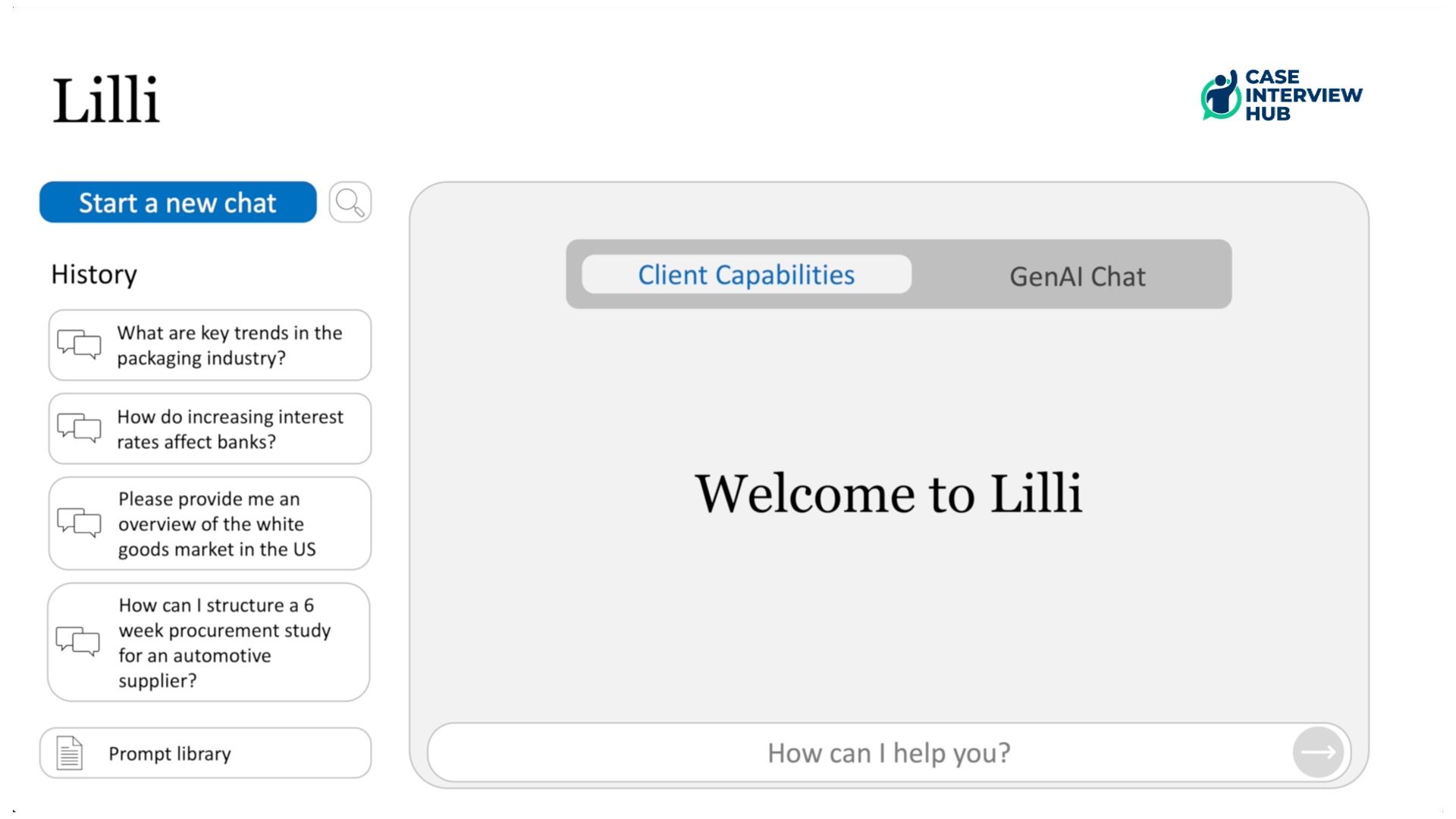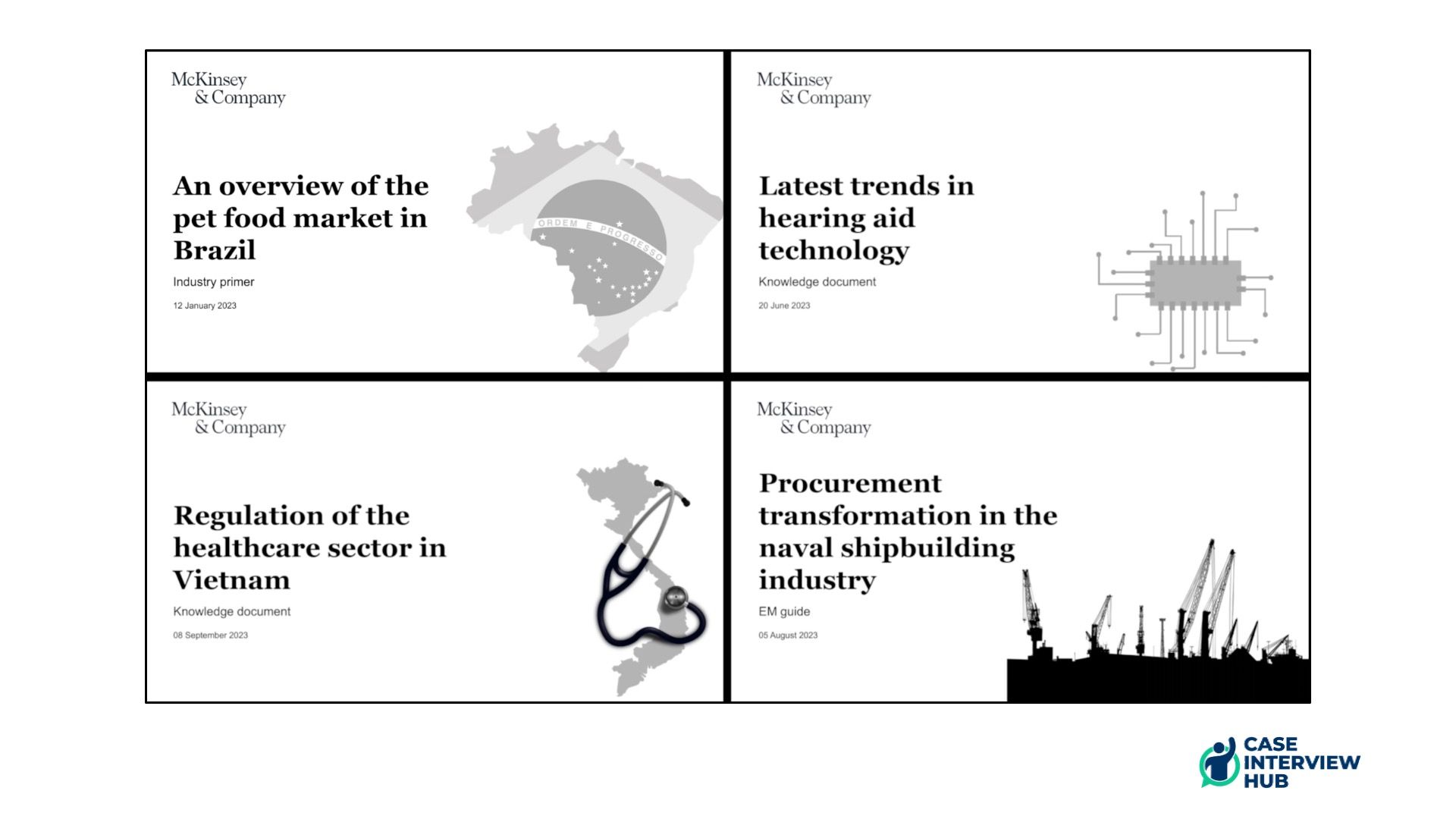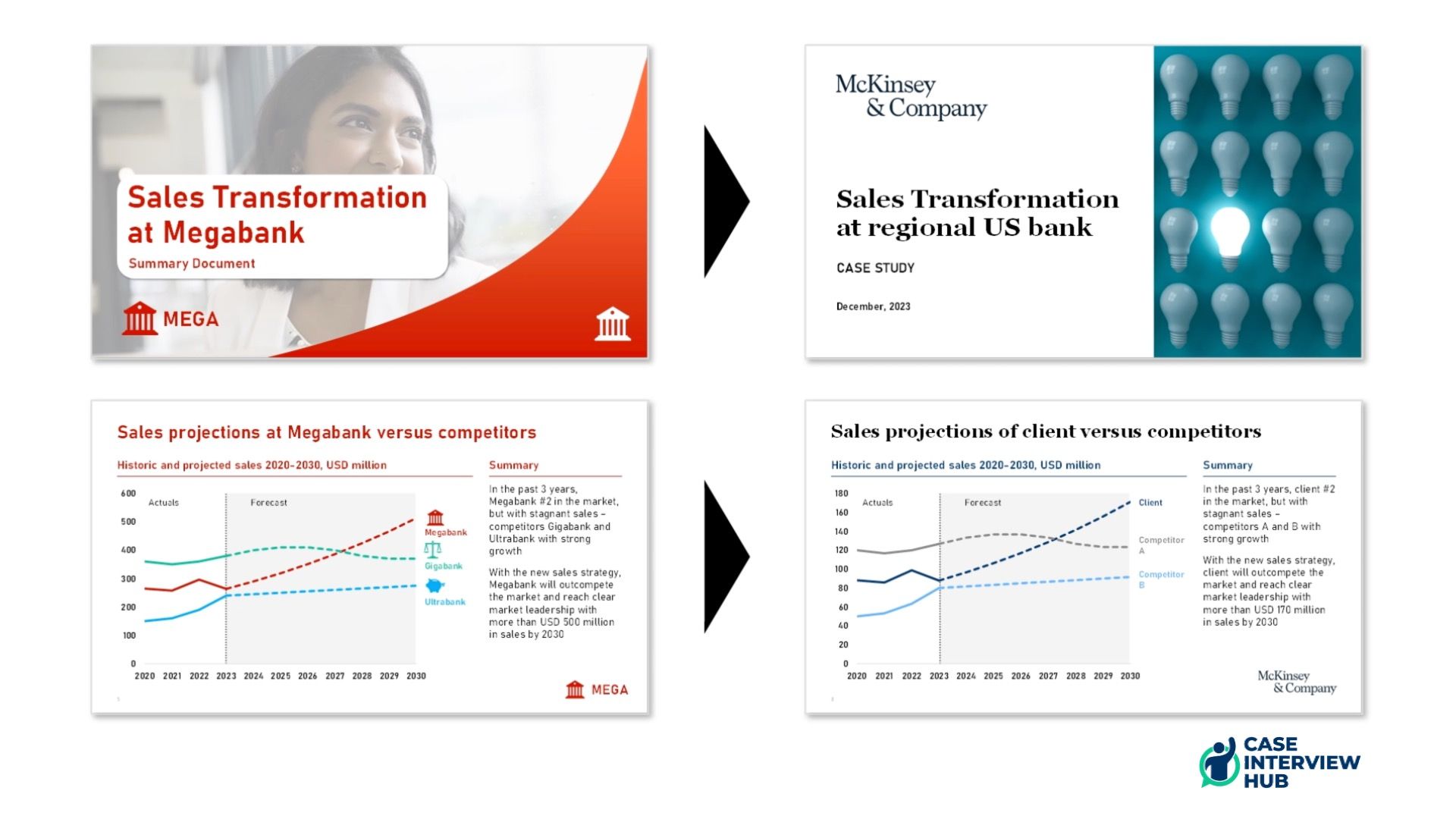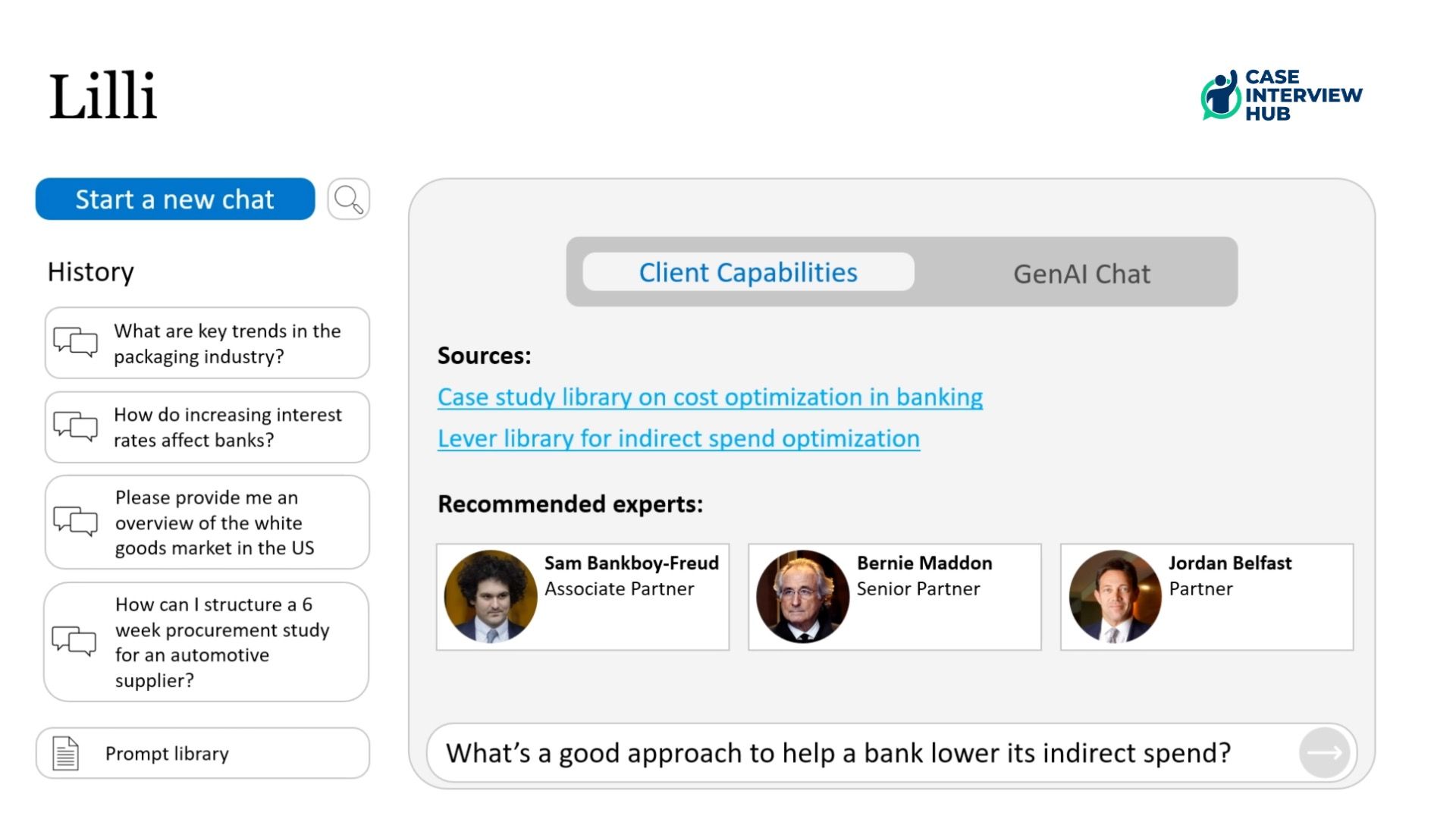GenAI in consulting - Is McKinsey’s AI Lilli the end of consulting?
Artificial Intelligence, or AI, has found it’s way into consulting. After Bain announced its cooperation with OpenAI, McKinsey introduced its own proprietary AI Solution, called Lilli. We will provide you an inside look at what Lilli exactly is and how it changes consulting and whether it is the end of consulting as we know it.
Oct 6
/
Case Interview Hub
What is Lilli?
Before we get into the functionality of Lilli, why even the name Lilli? Well, it is named after the first woman at McKinsey, Lilli Dombrowski.
Lilli is similar to ChatGTP. Not only does it look familiar, but it is also a synthesis engine, meaning that users enter a prompt and Lilli goes through the sources and gives a synthesized answer. What makes Lilli different from ChatGPT is that Lilli has two different modes:
-
GenAI mode based on ChatGPT
-
Client Capabilities mode
This Client Capabilities Mode is what makes Lilli so powerful. But to understand this mode we first have to take a little detour and explain how consulting firms manage their knowledge

All depictions of Lilli are just recreations and not the actual Lilli interface as Lilli is a proprietary McKinsey tool (and we don't want to get into trouble)
How consulting firms manage their knowledge
We will give you the McKinsey perspective as Lilli is a proprietary McKinsey tool. At McKinsey, everything is centered around a big knowledge database called “KNOW”. On KNOW, you can find the vast majority of knowledge that was generated over years of project work, codified and classified in an easily accessible way for McKinsey consultants of all levels. The documents will also be classified on how the material is allowed to be leveraged. So for example, whether the documents are client shareable or not.
KNOW has a great search function with many filters that lets you search for all sorts of knowledge pieces. Examples of types of documents are the following:
-
Industry primes: Introduction to industries if you have never work in it (e.g., Insurance) including players, sub-industries, market sizing, etc.
-
Guidebooks for Engagement Managers (i.e., EMs - equivalent to project manager): Detailed guides on how to set up and run a study in a specific industry or in specific topic (.e.g., how to run a procurement spend analysis) and also what tools can be leveraged, potential levers to create impact, etc.
-
In-depth industry analyses: Deep dives on a very specific industry (e.g., CDMO in Pharma, UHNWI relationship management in Wealth Management) including core players, market sizing, trends, etc.
-
Template workplans: Workplans for engagements in specific industries and on specific topics that can be tailored to the respective client situation
-
Case studies: Multi-page case studies on prior projects highlighting the approach, initiatives, impact, etc. These are often leveraged in Letters of Proposals (LOPs) to show that the firm has expertise in the specific industry and topic
-
...
To get a better feeling on what the topic of the knowledge documents could be, here are some examples:
-
The market for pet food in Brazil
-
The latest developments in hearing aid technology
-
Newest regulation of the healthcare sector in Vietnam
-
A blueprint for a procurement transformation in the naval shipbuilding industry
-
...

Some of these examples sound rather special, like the procurement piece for naval shipbuilding. But McKinsey has done so much project work over such a long time period that the amount of knowledge on KNOW is actually very vast and of course constantly growing.
You might wonder who manages and creates the knowledge pieces. This is how it works:
After a project with some novel or interesting aspect or twist to it, the project team usually creates a document about the engagement. The focus of these documents could be on anything that was a novel aspect. So for example:
-
How the project was structured
-
How different topics were approached
-
What insights were generated
-
What market trends were identified
-
...
Anything that’s useful and interesting will be captured. But now the important detail: these documents are always sanitized. Sanitized means that all client names or references that could reveal the client are changed or removed. So not only will you not find a client name, but also the data specific to the client is sometimes altered so that the client stays confidential. Aggregated market data is of course not altered.
This sanitization process is taken very seriously. McKinsey never reveals its clients and also internally client names and specifics are only communicated on a need-to-know basis. Consultants, all the way to partners, check the documents diligently to make sure it’s properly sanitized.

What makes Lilli so powerful
The reason why we explained KNOW in such detail is that what makes Lilli so powerful is its access to KNOW. You could ask Lilli anything, but in a conversational mode, and Lilli will skim through the KNOW database. Even if you are clueless on how to ask your questions, Lilli comes with a prompt library with best practice prompts for various topics and scenarios.
So instead of you, searching and filtering, hoping that you stumble upon the right document, Lilli will synthesize the information on KNOW for you, based on your specific question or problem.
For example, you could ask:
-
How to structure a specific workstream
-
To give a brief overview of an industry or (very) specific topic
-
To summarize McKinseys project experience in a sector, topic or region (or a combination of the three) to establish credibility with prospective clients
-
...
As output, you will receive a well-structured and synthesized answer based on McKinsey’s entire knowledge base.
On top of that, and this is where it goes beyond ChatGPT, each statement that Lilli makes has a direct reference to a specific document on KNOW. So you can check out the specific document Lilli is referring to with just one click. And finally, Lilli also points to firm-wide experts on the topic, as well as firm-internal solutions or teams. This helps tremendously if a client wants insights on a very niche topic and you can connect him or her with an internal expert for a brief workshop or working session. And given the broad internal network of experts, you are likely to find an expert for nearly any topic.

Aside from cataloguing all the internal knowledge, Lilli also also has access to external data providers. To give just one example, it’s interlinked with SEC data, so you can get all the financial data and annual report information from listed companies in the US, with Lilli synthesizing the data for you.
Can Lilli leak client data?
Based on how Lilli works and what documents it accesses it is safe to say that Lilli will not accidentally leak confidential client data. First of all, all the potentially sensitive internal knowledge comes from KNOW, which, as we learned before, only contains sanitized documents. So there won’t be any client names or references in the output. And secondly, a Lilli output would never go unchecked and be directly forwarded to the client. The output is always just a starting point. This will then be put on a slide in an appropriate form and quality checked extensively before it gets in front of a client. So the risk of Lilli leaking sensitive information is zero.
How does Lilli change the job of consultants?
Lilli changes the day to day job of consultants in 3 ways:
First, Lilli allows you to shortcut many tedious processes. For example, if you are a junior consultant and are currently in between projects - so on the beach - you typically have to support in writing Letter of Proposals (LOPs). These LOPs are basically answers to client’s requests for proposals (RFPs). In an RFP, clients ask consulting firms on how they would approach a specific challenge they have. The consulting firms then put together an LOP and pitch that to the client. In the end, the client selects one consultancy who then gets to execute the project. The process of writing LOPs is usually very tedious - especially for younger consultants who don’t have any experience in the industry or topic of the LOP. They usually spend hours just collecting material and trying to figure out what the topics is even all about. Lilli shortcuts this process by summarizing the key points and also presenting them with the used sources and experts on the topic. A true game changer for LOPs that speeds up this process tremendously for junior consultants.
Another example is structuring projects. As an engagement manager, you usually spend a lot of time structuring a project prior to the actual start of the project. So dividing up the workstreams, defining the scope, allocating time and resources, etc. Lilli can give you insights on how other projects in the space were structured and can also account for your specific requirements if you define them for Lilli.
And lastly, Lilli can help you during projects. If you are stuck in your workstream and don’t know what to do next or what areas to look into, you can use Lilli to give you an idea of what the next steps could be and what trends you could look into or which expert you could reach out to.
So overall, Lilli has the potential to shortcut many tasks that usually require you to go through the knowledge database, looking for the right docs, and synthesizing the key inputs from multiple sources. This is a task that is usually very time consuming - especially if you are not familiar with an industry. Lilli speeds up this process a lot.
Will Lilli replace consultants?
Are masses of consultants going to be replaced by Lilli? The answer is a clear No.
Lilli is great in synthesizing existing knowledge but (this far) cannot link it to concrete client situations. And client situations are often highly complex and corporate politics come into play.
The job of a consultant isn’t just googling some stuff or copy-pasting something from the internal knowledge resources and then throwing it over the fence to the client. It’s so much more. There are many things Lilli will not do for you:
-
Organize a workshop with clients
-
Go to meetings and interview clients
-
Go in the client’s factory and analyze the production processes
-
Ask the backoffice team to launch a new research effort
-
Analyze the clients organizational structure
-
...
And the most important thing: Lilli will not be a trusted advisor for the clients. Especially in senior roles, it is crucial that consultants are in regular exchanges with clients on their strategic priorities and challenges, acting as a sparring partner. These relationships with client executives often span over years and even decades - also across companies if the executive takes on a new role at a different company. And clients will never discuss their strategic priorities and ideas with Lilli.
So in conclusion, it should be clear that GenAI will not kill consulting, or certain consulting firms. Lilli is definitely useful for speeding up some workflows and quickly preparing nicely synthesized input. But the consultant is the one connecting the dots and closely interacting with the client.
And if anyone thinks that they can dethrone dethrone McKinsey, BCG, or Bain now that they have ChatGPT, think again. ChatGPT doesn’t do the job of a consultant for you, it doesn’t replace a global network of experts, and it doesn’t pull data from a huge internal knowledge database.

